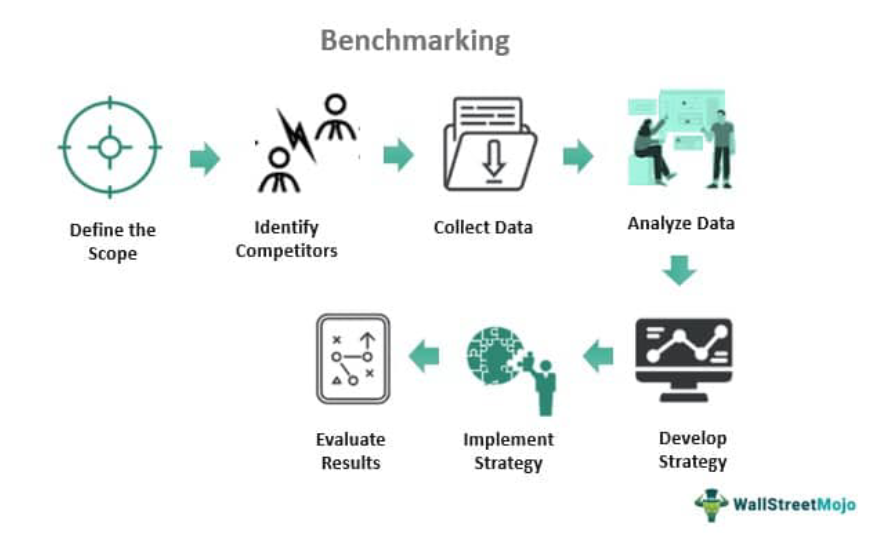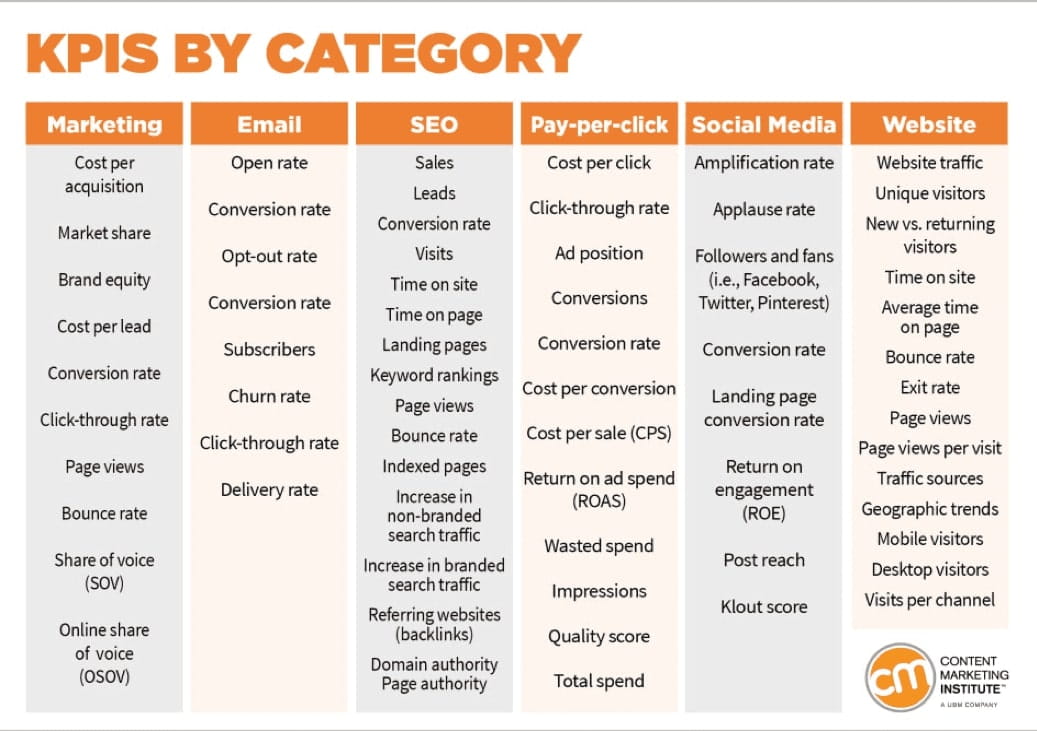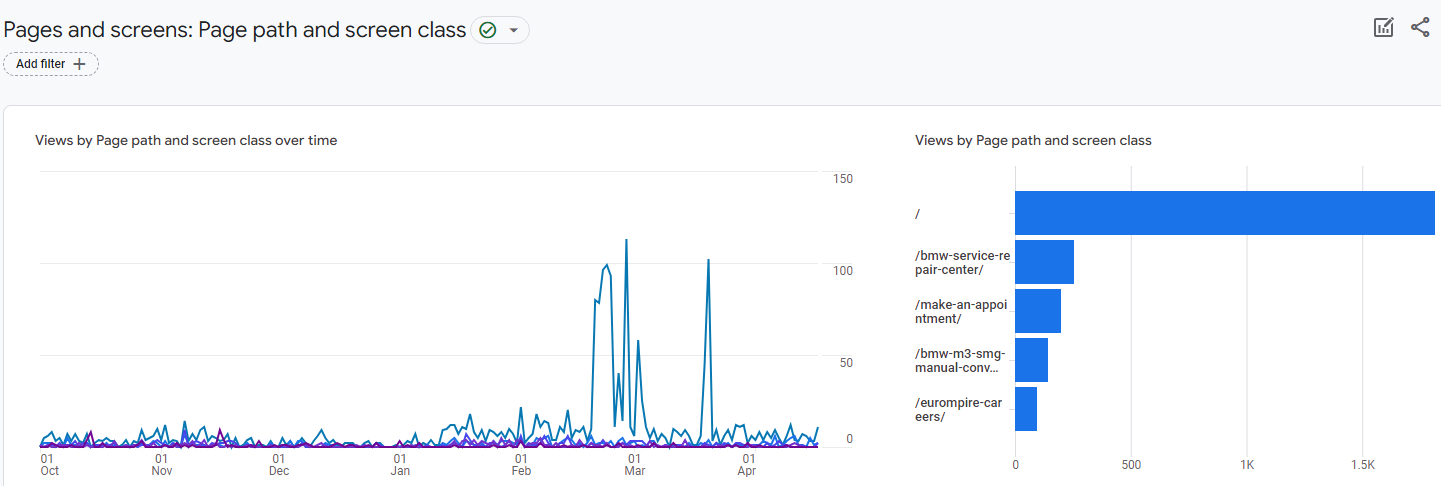Setting Benchmarks
Setting benchmarks is essential for measuring your marketing success and seeing how well your brand performs compared to others. This guide will help you with all you need to know about setting benchmarks for your brand, giving you a clear plan for assessing performance and encouraging growth.
What Are Benchmarks?
Benchmarks serve as essential reference points that allow us to measure performance accurately. In the world of marketing, they play a crucial role by enabling brands to assess their success consistently over time. They offer a way for brands to see how they stack up against their competitors, providing clear insights into where they stand in the market. Additionally, benchmarks are invaluable tools for pinpointing specific areas where a brand can improve. By understanding and utilizing benchmarks effectively, brands can make informed decisions to enhance their strategies and achieve better results.

Step 1: Identify Key Performance Indicators (KPIs)
Before diving into the process of setting benchmarks, it’s crucial to first pinpoint the Key Performance Indicators (KPIs) that align closely with your brand’s objectives. KPIs act as a compass, guiding your marketing strategy by highlighting what’s working and what needs improvement. Let’s delve deeper into some of these KPIs:
- Website Traffic: This KPI measures the number of visitors to your website. It’s a fundamental indicator of your site’s popularity and the effectiveness of your SEO and content marketing efforts. Tracking website traffic helps you understand the reach of your online presence.
- Conversion Rates: Conversion rate is a critical KPI that measures the percentage of visitors who take a desired action on your website, such as making a purchase, signing up for a newsletter, or downloading a white paper. It directly reflects the effectiveness of your website design, user experience, and call-to-action prompts.
- Social Media Engagement: This encompasses likes, shares, comments, and follows on your brand’s social media profiles. High engagement rates indicate that your content resonates well with your audience, fostering a strong community around your brand.
- Email Open Rates: This KPI tracks the percentage of recipients who open the emails you send. A high email open rate suggests that your email subject lines are compelling and that your audience finds the emails relevant. It’s a direct reflection of the effectiveness of your email marketing campaigns.
- Customer Satisfaction Scores (CSAT): While not mentioned initially, CSAT is a vital KPI for gauging customer satisfaction through surveys conducted post-purchase or interaction. High CSAT scores indicate that customers are happy with your product or service, which can lead to repeat business and referrals.
- Net Promoter Score (NPS): Another important KPI, NPS measures customer loyalty and the likelihood of customers recommending your brand to others. It’s a powerful indicator of your brand’s reputation and customer satisfaction over time.
Identifying the right KPIs requires a deep understanding of your brand’s goals and the customer journey. Once identified, these KPIs will serve as the foundation for setting meaningful benchmarks that are aligned with your strategic objectives. By focusing on these indicators, you can create a targeted approach to improving your brand’s performance across various channels and touchpoints.

Step 2: Gather Historical Data
Looking back at your brand’s past performance is a critical step in establishing meaningful benchmarks for future strategies. This retrospective analysis involves more than just glancing at previous numbers; it’s a deep dive into the data to uncover trends, patterns, and insights that can shape your forward-looking goals. Here’s how to make the most of this process:
- Compile Comprehensive Data: Start by gathering data from all relevant sources, including sales figures, website analytics, social media metrics, customer feedback, and more. The aim is to have a holistic view of your brand’s performance across all channels.
- Analyze Performance Over Time: Examine how your key metrics have changed over time. This could be on a monthly, quarterly, or yearly basis, depending on your business cycle and industry. Look for any upward or downward trends in these metrics and try to correlate them with specific actions or events, such as marketing campaigns, product launches, or external market conditions.
- Identify Patterns: Beyond trends, look for recurring patterns. For instance, do certain times of the year consistently result in higher website traffic or sales? Are there patterns in customer feedback that highlight areas needing improvement? Recognizing these patterns can help you understand what works well and what doesn’t, guiding your strategic planning.
- Benchmark Against Goals: Compare your historical data against the goals you had set for those periods. This comparison will show you where you succeeded, where you fell short, and provide insights into why. Understanding the gap between goals and actual performance is crucial for setting more accurate benchmarks in the future.
- Learn from Successes and Failures: Analyze both your best-performing and underperforming initiatives. What made some strategies more successful than others? Was it timing, execution, market conditions, or something else? Learning from both successes and failures is key to refining your approach.
- Consider External Factors: It’s important to account for external factors that might have influenced your performance, such as economic shifts, changing consumer behaviors, or new competitors entering the market. These factors can provide context to your data, helping you set more realistic benchmarks.
- Set the Foundation for Future Benchmarks: Armed with this comprehensive understanding of your past performance, you can now set benchmarks that are not only ambitious but also grounded in reality. These benchmarks should reflect both your brand’s potential and the practical lessons learned from your historical data.
By thoroughly reviewing past performance, you can identify valuable insights that inform smarter goal setting. This process enables you to build on what works, pivot away from what doesn’t, and set benchmarks that drive meaningful growth.

Step 3: Research Industry Standards
Looking back at your brand’s past performance is a critical step in establishing meaningful benchmarks for future strategies. This retrospective analysis involves more than just glancing at previous numbers; it’s a deep dive into the data to uncover trends, patterns, and insights that can shape your forward-looking goals. Here’s how to make the most of this process:
-
Compile Comprehensive Data: Start by gathering data from all relevant sources, including sales figures, website analytics, social media metrics, customer feedback, and more. The aim is to have a holistic view of your brand’s performance across all channels.
-
Analyze Performance Over Time: Examine how your key metrics have changed over time. This could be on a monthly, quarterly, or yearly basis, depending on your business cycle and industry. Look for any upward or downward trends in these metrics and try to correlate them with specific actions or events, such as marketing campaigns, product launches, or external market conditions.
-
Identify Patterns: Beyond trends, look for recurring patterns. For instance, do certain times of the year consistently result in higher website traffic or sales? Are there patterns in customer feedback that highlight areas needing improvement? Recognizing these patterns can help you understand what works well and what doesn’t, guiding your strategic planning.
-
Benchmark Against Goals: Compare your historical data against the goals you had set for those periods. This comparison will show you where you succeeded, where you fell short, and provide insights into why. Understanding the gap between goals and actual performance is crucial for setting more accurate benchmarks in the future.
-
Learn from Successes and Failures: Analyze both your best-performing and underperforming initiatives. What made some strategies more successful than others? Was it timing, execution, market conditions, or something else? Learning from both successes and failures is key to refining your approach.
-
Consider External Factors: It’s important to account for external factors that might have influenced your performance, such as economic shifts, changing consumer behaviors, or new competitors entering the market. These factors can provide context to your data, helping you set more realistic benchmarks.
-
Set the Foundation for Future Benchmarks: Armed with this comprehensive understanding of your past performance, you can now set benchmarks that are not only ambitious but also grounded in reality. These benchmarks should reflect both your brand’s potential and the practical lessons learned from your historical data.
By thoroughly understanding where you stand relative to your industry, you equip your brand with the knowledge needed to make informed decisions, strategically allocate resources, and set benchmarks that drive towards success in a competitive market.
Step 4: Set Realistic and Specific Benchmarks
To make your benchmarks even more effective, involve your team in the benchmark-setting process to ensure everyone understands and commits to these goals. Regularly review and adjust these benchmarks as your brand grows and market conditions change, keeping them relevant and challenging. Additionally, celebrate the milestones reached and learn from the benchmarks that were not met, using both outcomes as stepping stones for continuous improvement and strategic planning.

Step 5: Implement and Track Progress
Once you’ve established your benchmarks and begun implementing strategies, it’s crucial to create a schedule for regular check-ins to monitor your progress. Utilize analytics tools like Google Analytics, and SEMRush, not only to track performance but also to dive deep into the data for insights that could lead to strategy optimization. If certain benchmarks are not met on a consistent basis, take this as an opportunity to re-evaluate and potentially switch up your approach or set more realistic targets. Celebrate the achievements of hitting benchmarks as they can serve as motivational milestones for your team, and confirming an effective strategy.

Step 6: Review and Adjust Benchmarks
Benchmarks are like guiding stars for your brand’s journey to achieve its goals. But remember, both the market and your brand are always changing. When new information comes in about how customers behave, what’s happening in your industry, or what your competitors are doing, it’s crucial to check if your benchmarks still make sense. This regular check-up makes sure your benchmarks match up with what’s currently happening in the market and the direction your brand is heading.
Also, when the market changes—like when there’s an economic downturn, new technology, or changing customer likes and dislikes—your benchmarks might need an update. A goal that used to be a stretch might now be too easy or too hard because of these outside changes. By keeping an eye on these shifts and adjusting your benchmarks, you help your brand keep growing in a way that matters.
As your brand grows and changes, what you’re aiming for might change too. You might introduce new products or services, or decide to focus on different long-term goals. Your benchmarks need to reflect these changes to stay useful in measuring how well you’re doing.
Changing your benchmarks doesn’t mean you’ve failed. Instead, it shows you’re flexible and ready to improve—key traits for success in today’s quick-moving world. Making sure your benchmarks stay relevant and challenging helps keep your brand on track and moving forward, no matter how much things change around you.
Setting good benchmarks is a continous process that needs you to really understand your brand, what’s normal in your industry, and how the market changes. By using this detailed guide, you can make sure your benchmarks are more than just goals. They’ll be strategic tools that help improve performance, make better decisions, and push your brand towards its aims.
The secret to doing benchmarking the right way is being specific, realistic, and ready to change when needed. Think of benchmarks not just as goals to hit, but as helpful insights that shape the way you plan your marketing and run your business.

